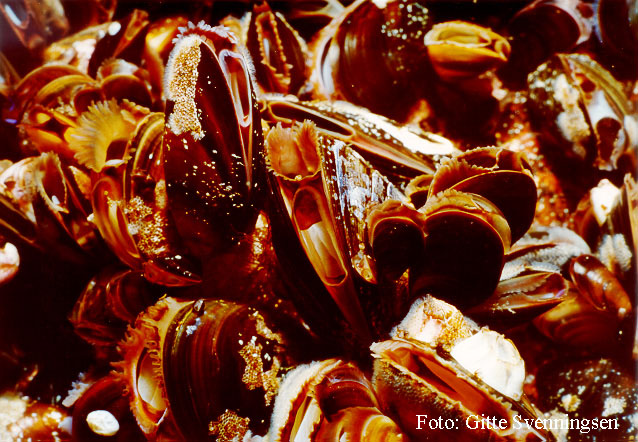Common Mussel
(Mytilus edulis).

Mussels filter fjord water.
The mussel is the most numerous and biologically important bottom dweller in the fjord and there are dense populations almost everywhere. They are not very big but there are a lot of them. They are the staple diet of a great many species, and also clean the fjord water by pumping it through the filters in which they gather their food. The volume of water that passes through the fjord’s mussel population every day is equivalent to twice the total volume of water in the fjord, but it is of course largely the same water they filter all the time.
In very hot summers, following a winter with a lot of precipitation and therefore a great deal of nitrogen run-off, anoxia (deoxygenation) can occur. This can mean that many of the mussels die. And in winters when the water is frozen over for a long time oxygen levels at the bottom can fall so low that they cannot survive. However, as they are able to reproduce prolifically, the population is reestablished relatively quickly.
A number of the fjord’s birds live on mussels; for example the many tufted ducks that winter on the fjord. In the daytime the ducks stay quietly in a few sheltered roosts, but about an hour after sunset they go out onto the water in large flocks, and spend the night diving for mussels on the bottom. Eider too, which have spread down through the fjord in recent years, feed primarily on mussels.
The mussels in the fjord are generally too small for us to use for food. In Isefjord though there are mussels big enough to eat. These sometimes contain little pearls (1 – 3 mm).
